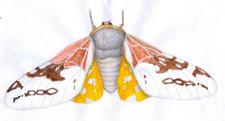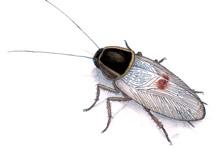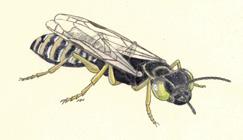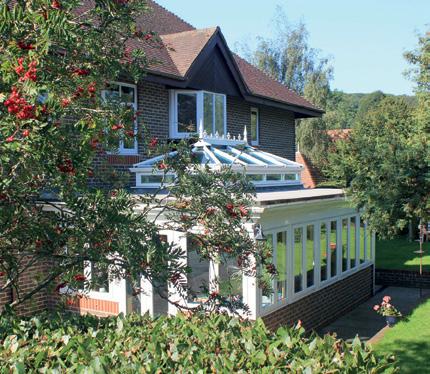
2 minute read
Abuzz in Cretaceous Park
Lockdown has provided a unique opportunity to look at fossils now skulking in the shed, picked up years ago, or donated by friends after day trips to the Weald and the East Sussex coast.
Pic. 4 (left): Butterfly bug (Valdilerdocossus species); cicada-like insect in the days before butterflies.
Advertisement
Sussex is internationally renowned for producing two out of three of the first dinosaurs ever found, all from the Cretaceous Period, but older than the Seaford Chalk. Fossils can be hard to visualize by non-specialists due to the vagaries of preservation. Thus reconstructions and restorations can be helpful for educational purposes.

The Ouse Valley Art Group has not been able to meet for a year. So after a bit of sorting out, we’ve got on with some palaeoart of the less well-known contemporaries of the dinosaurs. Here we revive some of these 130-million-year old creatures that once lived in a ‘Cretaceous Park’. They are now safely in museums…
Ed did the research, Neil produced several black and white sketches (Pics 1, 3 and 6), and Biddy created all the watercolours. Our thanks to Fred Clouter for his help with the scans. Pic. 5 (right): Large water bug (Iberonepa species) whose living relatives may bite your toes if you go swimming in ponds or streams in warmer parts of the globe. The males have a reputation for parental care.
Pic. 6 (left): Cockroach wasp (Archisphex boothi). A solitary wasp – social wasps living in colonies were still in the future.

Pic. 1 (left): Very rare stonefly (Ecdyoperla fairlightensis), originally found at Fairlight by the Jesuit Teilhard de Chardin and a companion, later associated with the Piltdown Hoax.
Pic. 2 (right): Archaic earwig (Valdopteron woodi) which didn’t yet have those distinctive earwig forcep-like pincers on the tail.
Pic. 3 (left): Cockroach (Elisama molossa) which could have Pic. 7. (right): Pine flower weevil (Oxycorynoides bucklowae). Weevils are the largest family in the natural world and not always popular in gardens, but this extinct beetle lived before most flowers appeared.
Pic. 8 (left): Crane-fly (Gynoplistia mitchelli) with possible Australian relatives.
Pic. 9 (right): Black fungus gnat (sciarid) on mushroom. Looks modern, but no fossil mushroom has been found yet in the South East, although one has turned up in slightly younger rocks in Brazil. We’re still hopeful! Biddy and Ed Jarzembowski, and Neil Watson


Abbeyfield House
North Road, Alfriston BN26 5XB
Providing safe and homely supported housing for older people in Alfriston
● your own private ensuite room ● daily contact with dedicated staff ● two nutritious home-cooked meals daily ● spacious communal lounge/dining room and gardens ● downland village living ● all-inclusive rates

Making time for older people
Please do get in touch for more information or to arrange a visit T: 01323 871767 E: alfriston@abbsd.co.uk
www.abbsd.co.uk











